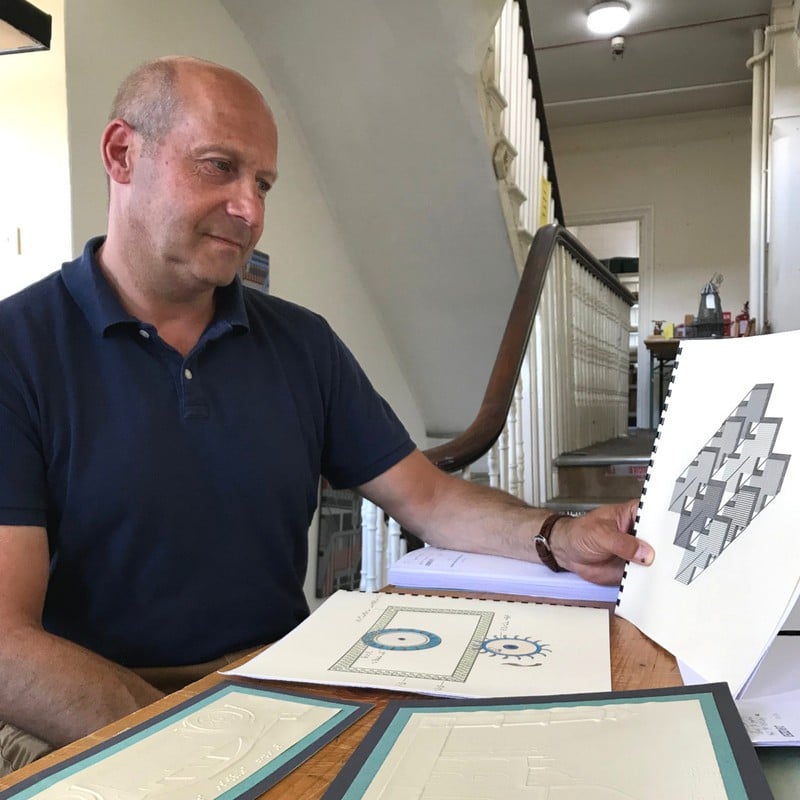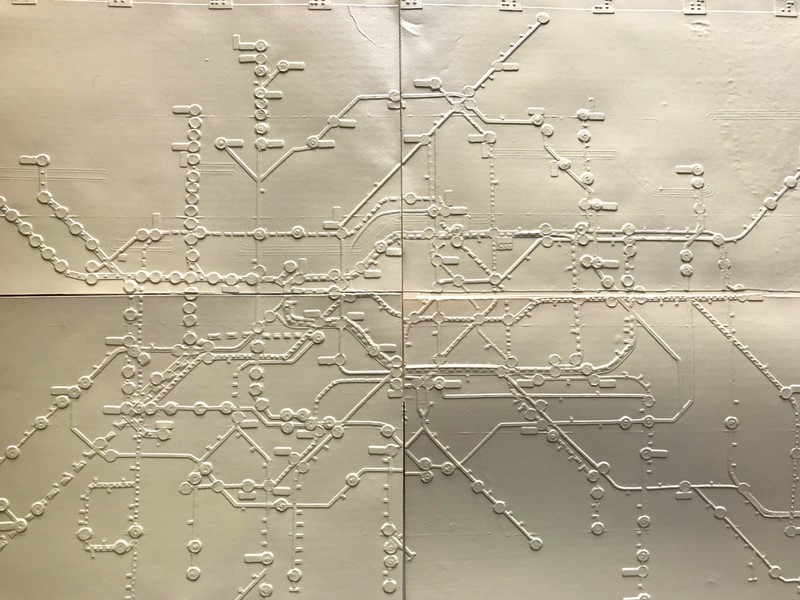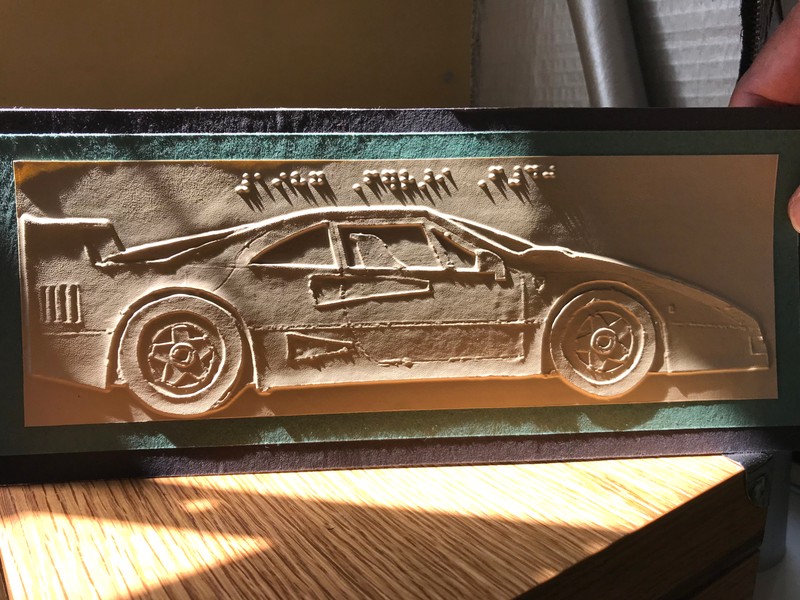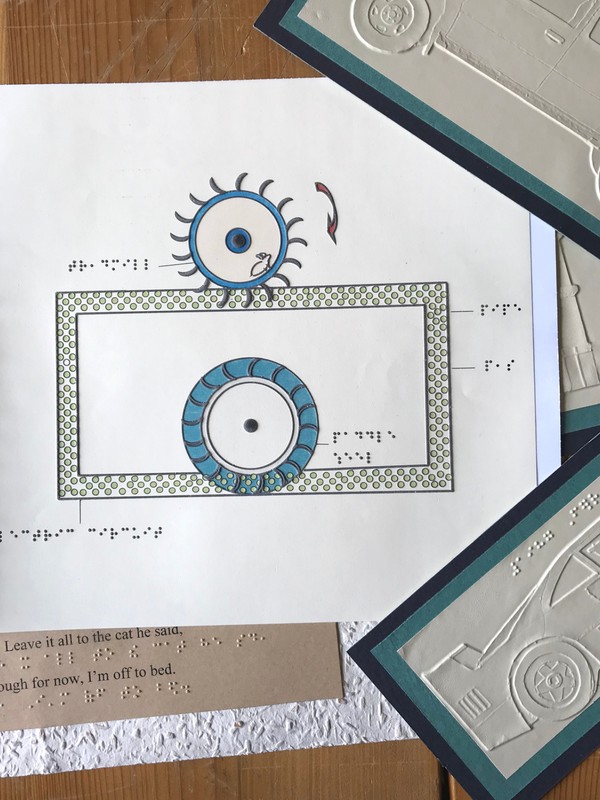Braille
Posted on theOpening Up the world of Braille
Robert is a dedicated Koestler volunteer and former auctioneer and valuer at Sotheby’s. This year he visited Eleanor Southwood at the Royal National Institute of Blind People (RNIB), to help her in the judging of our Braille category. As a category that might not receive as much of the spotlight, it was interesting to hear more about the impact that the Braille entries have. Robert tells us more below…
How did you decide on the award-winning pieces?
With the text, or transcription, it was mostly about layout. Just as with sighted text printing, with Braille, it was a question of – were paragraphs clearly delineated? Were the spaces in between the lines comfortable? Were there clear indications when a section changed, or paragraphs not getting too near the margins, top bottom and the sides? Because, just as if you found a page over-printed with too much text a bit overwhelming, so it is for an unsighted person to cope with a braille page with that much text printed too near the edges.
With the original work, of course it was about content as well. There was, for instance, an introduction on how to play Braille music. And Eleanor was delighted to see that because she had tried to learn the piano as a youngster. She said, ‘if only I’d had this’.
What pieces stood out to you both?
There was a contour map of the London Underground, which Eleanor had never experienced before. I, in my ignorance, had made a presumption that there probably was already a braille underground map. She didn’t know how the lines juxtaposed. So, for her to actually put her hand on a fold out map, showing how the lines all angled, intersected, the distances, and the stations, was quite thrilling for her.
Amongst the visual entries, there was a contour picture of a Ferrari. Eleanor was amazed to be able to, with her fingers, detect the shape, scale and size of the Ferrari. She’d had no awareness of what they are like. And the low to the ground, sleek profile, was a revelation to her. She said she always knew people admired the cars but didn’t know why they admired them particularly.
Some of the text entries were really big endeavours. One of the contributions was one of a Victoria Cross recipient – and Eleanor was able to read a citation for the awarding Victoria cross, which are usually pretty inspiring things! It was the idea of bothering to produce something in Braille which had content that would be greatly appreciated by everyone that made it stand out.
What did you learn from your day judging this category?
For me, it was truly an education, and an inspirational moment. To sit with an unsighted person and learn the points that she appreciates in works produced for the unsighted. There is as much complexity to Braille printing as there is to visual text printing. The layout can be attractive, unattractive, easy to use or not easy to use. That was a revelation to me, and I was very grateful to hear about that.
The more people there are working in Braille, effectively, the bigger the library for the unsighted becomes. It was a huge pleasure and a privilege to learn about that, and to be present when someone else was experiencing something for the first time. It was an amazing morning for me.





